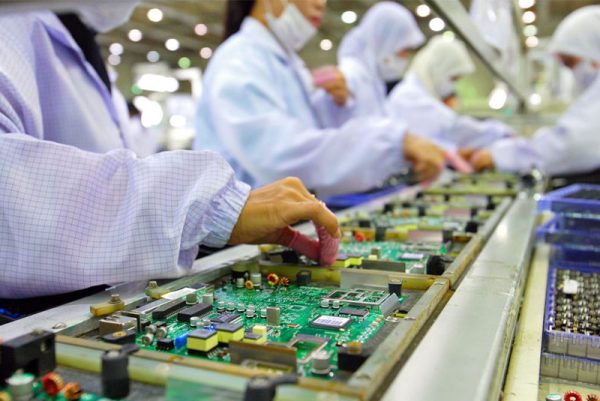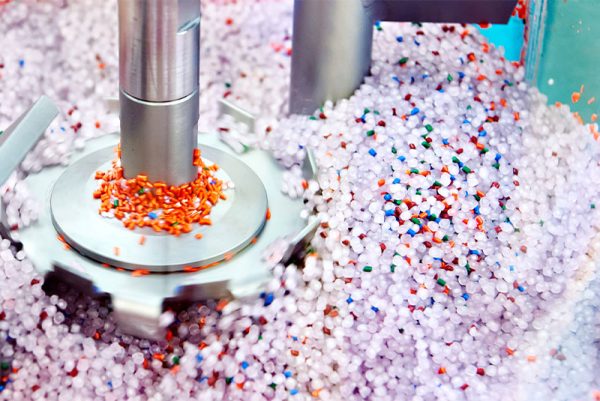Polymer materials have been used in various industries due to their unique properties such as flexibility, durability, and lightweight. The electrical and electronics industry is no exception, as polymers have become an integral part of electronic devices. Polymers have been used in various forms such as insulators, conductors, and semiconductors, making them essential components in the manufacturing of electronic devices. In this blog post, we will explore the use of polymers in the electrical and electronics industry and their applications.
Polymers in Electrical Insulation
Polymers have been used as electrical insulation materials for decades. They are used to insulate wires, cables, and other electrical components. The most commonly used polymer for electrical insulation is polyvinyl chloride (PVC). PVC is a thermoplastic polymer that is commonly used in the manufacturing of electrical cables due to its excellent insulating properties. PVC is also resistant to moisture, chemicals, and UV radiation, making it an ideal material for outdoor applications.
Another polymer used for electrical insulation is polyethylene (PE). PE is a thermoplastic polymer that is commonly used in the manufacturing of high-voltage cables. It has excellent dielectric properties, which make it an ideal material for insulating high-voltage cables. PE is also resistant to moisture, chemicals, and UV radiation, making it an ideal material for outdoor applications.
Polymers in Conductors
Polymers have also been used as conductive materials. Conductive polymers are a class of materials that have the ability to conduct electricity. They are made up of a long chain of repeating units that are doped with a small amount of impurities. The most commonly used conductive polymer is polyaniline (PANI). PANI is a highly conductive polymer that is used in the manufacturing of electronic devices such as sensors, batteries, and capacitors.
Another conductive polymer is polyacetylene (PA). PA is a highly conductive polymer that is used in the manufacturing of electronic devices such as transistors and solar cells. PA has excellent electrical conductivity, which makes it an ideal material for electronic devices.
Polymers in Semiconductors
Polymers have also been used as semiconductors. Semiconducting polymers are a class of materials that have the ability to conduct electricity under certain conditions. They are made up of a long chain of repeating units that are doped with a small amount of impurities. The most commonly used semiconducting polymer is polythiophene (PT). PT is a highly conductive polymer that is used in the manufacturing of electronic devices such as OLEDs, solar cells, and transistors.
Another semiconducting polymer is polyfluorene (PF). PF is a highly conductive polymer that is used in the manufacturing of electronic devices such as OLEDs and solar cells. PF has excellent electrical conductivity, which makes it an ideal material for electronic devices.
Applications of Polymers in Electrical and Electronics
Polymers have a wide range of applications in the electrical and electronics industry. Some of the most common applications of polymers in the electrical and electronics industry are:
Insulation
Polymers such as PVC and PE are used as electrical insulation materials for wires, cables, and other electrical components. They are also used in the manufacturing of transformers, capacitors, and other electronic devices.
Conductors
Conductive polymers such as PANI and PA are used in the manufacturing of electronic devices such as sensors, batteries, and capacitors. They are also used in the manufacturing of printed circuit boards (PCBs) and other electronic components.
Semiconductors
Semiconducting polymers such as PT and PF are used in the manufacturing of electronic devices such as OLEDs, solar cells, and transistors. They are also used in the manufacturing of sensors and other electronic components.
Conclusion
The primary prerequisite for using any material to produce electrical insulation is low electrical conductivity. Because the majority of polymers naturally have relatively low electrical conductivity, they are frequently employed as insulation for electrical systems. Depending on the specifics of the application, the ideal polymer option for a given electrical insulation application will vary. For instance, rigid polymers are favored as housings, enclosures, and coverings providing both mechanical protection and electrical insulation for many different electrical and electronic components while flexible polymers are favored as insulation materials for wires and cables.
Electronic and electrical equipment is everywhere around us. They are utilized everywhere, from the terrestrial environment of a mobile phone to the subaqueous and extraterrestrial realms. They are utilized in the most contaminated areas of our world as well as in extremely hot and cold climates, deserts, and jungles. Determining whether the product will exhibit adequate weathering and ageing resistance under the influence of elements like chemical exposure (to cleaning solutions, acid rain, other pollutants, etc.), consistently high levels of relative humidity, temperature extremes, thermal shock, UV exposure, and exposure to high-energy radiation may therefore be part of the assessment of durability depending on the environment of use.




